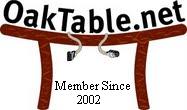A little more groundwork. Trust me, the Linux NUMA API discussion that is about to begin and the microbenchmark and Oracle benchmark tests will make a lot more sense with all this old boring stuff behind you.
Another Terminology Reminder
When discussing NUMA, the term node is not the same as in clusters. Remember that all the memory from all the nodes (or Quads, QBBs, RADs, etc) appear to all the processors as cache-coherent main memory.
More About NUMA Aware Software
As I mentioned in Oracle on Opteron with Linux–The NUMA Angle (Part I), NUMA awareness is a software term that refers to kernel and user mode software that makes intelligent decisions about how to best utilize resources in a NUMA system. I use the generic term resources because as I’ve pointed out, there is more to NUMA than just the non-uniform memory aspect. Yes, the acronym is Non Uniform Memory Access, but the architecture actually supports the notion of having building blocks with only processors and cache, only memory, or only I/O adaptors. It may sound really weird, but it is conceivable that a very specialized storage subsystem could be built and incorporated into a NUMA system by presenting itself as memory. Or, on the other hand, one could envision a very specialized memory component—no processors, just memory—that could be built into a NUMA system. For instance, think of a really large NVRAM device that presents itself as main memory in a NUMA system. That’s much different than an NVRAM card stuffed into something like a PCI bus and accessed with a device driver. Wouldn’t that be a great place to put an in-memory database for instance? Even a system crash would leave the contents in memory. Dealing with such topology requires the kernel to be aware of the differing memory topology that lies beneath it, and a robust user mode API so applications can allocate memory properly (you can’t just blindly malloc(3) yourself into that sort of thing). But alas, I digress since there is no such system commercially available. My intent was merely to expound on the architecture a bit in order to make the discussion of NUMA awareness more interesting.
In retrospect, these advanced NUMA topics are the reason I think Digital’s moniker for the building blocks used in the AlphaServer GS product line was the most appropriate. They used the acronym RAD (Resource Affinity Domain) which opens up the possible list of ingredients greatly. An API call would return RAD characteristics such as how many processors, how much memory (if any) and so on a RAD consisted of. Great stuff. I wonder how that compares to the Linux NUMA API? Hmm, I guess I better get to blogging…
When it comes to the current state of “commodity NUMA” (e.g., Opteron and Itanium) there are no such exotic concepts. Basically, these systems have processors and memory “nodes” with varying latency due to locality—but I/O is equally costly for all processors. I’ll speak mostly of Opteron NUMA with Linux since that is what I deal with the most and that is where I have Oracle running.
For the really bored, here is a link to a AlphaServer GS320 diagram.
The following is a diagram of the Sequent NUMA-Q components that interfaced with the SHV Xeon chipset to make systems with up to 64 processors:
OK, I promise, the next NUMA blog entry will get into the Linux NUMA API and what it means to Oracle.



1 Response to “Oracle on Opteron with Linux-The NUMA Angle (Part II)”